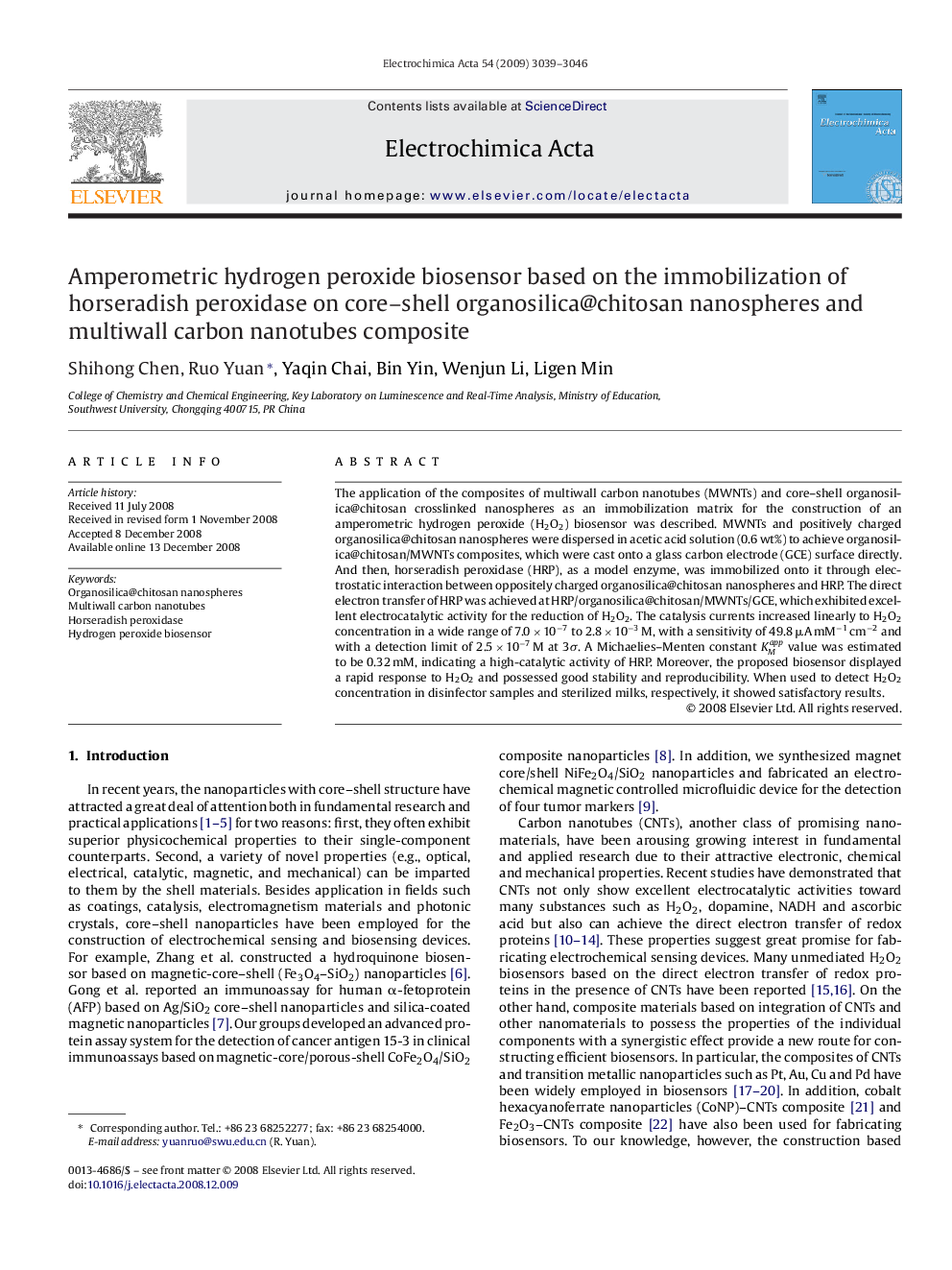| Article ID | Journal | Published Year | Pages | File Type |
|---|---|---|---|---|
| 193283 | Electrochimica Acta | 2009 | 8 Pages |
The application of the composites of multiwall carbon nanotubes (MWNTs) and core–shell organosilica@chitosan crosslinked nanospheres as an immobilization matrix for the construction of an amperometric hydrogen peroxide (H2O2) biosensor was described. MWNTs and positively charged organosilica@chitosan nanospheres were dispersed in acetic acid solution (0.6 wt%) to achieve organosilica@chitosan/MWNTs composites, which were cast onto a glass carbon electrode (GCE) surface directly. And then, horseradish peroxidase (HRP), as a model enzyme, was immobilized onto it through electrostatic interaction between oppositely charged organosilica@chitosan nanospheres and HRP. The direct electron transfer of HRP was achieved at HRP/organosilica@chitosan/MWNTs/GCE, which exhibited excellent electrocatalytic activity for the reduction of H2O2. The catalysis currents increased linearly to H2O2 concentration in a wide range of 7.0 × 10−7 to 2.8 × 10−3 M, with a sensitivity of 49.8 μA mM−1 cm−2 and with a detection limit of 2.5 × 10−7 M at 3σ . A Michaelies–Menten constant KMapp value was estimated to be 0.32 mM, indicating a high-catalytic activity of HRP. Moreover, the proposed biosensor displayed a rapid response to H2O2 and possessed good stability and reproducibility. When used to detect H2O2 concentration in disinfector samples and sterilized milks, respectively, it showed satisfactory results.
